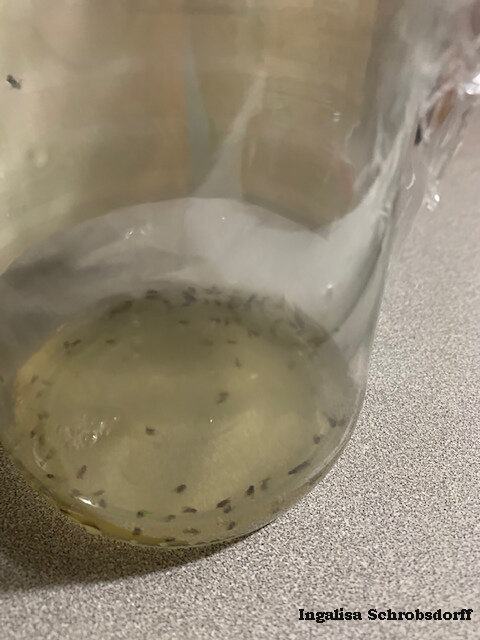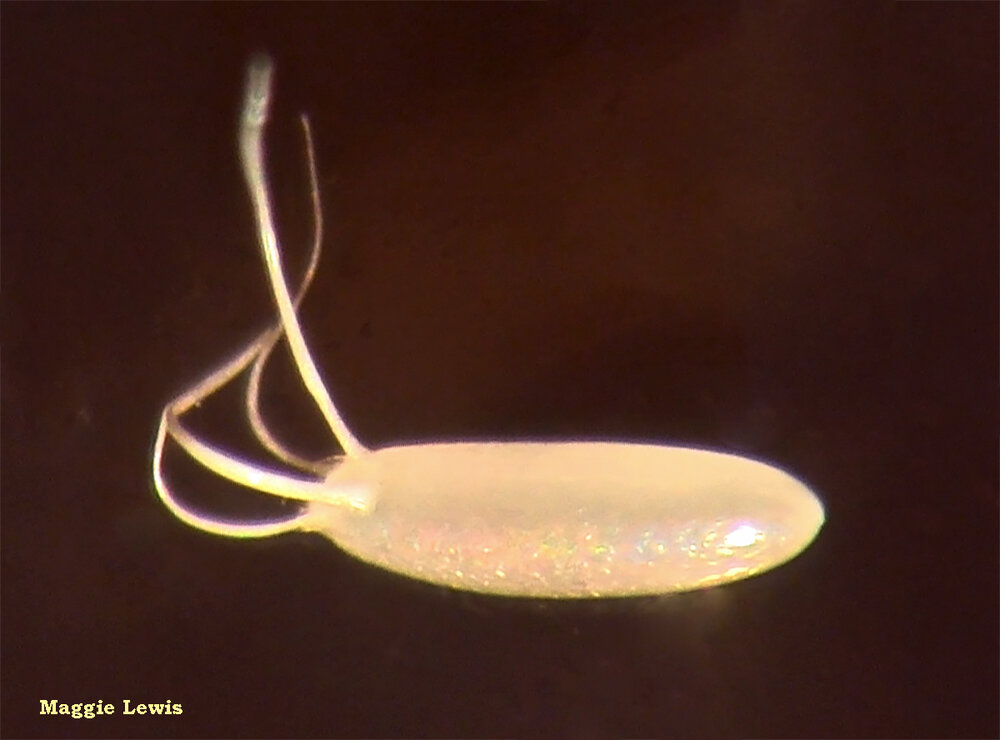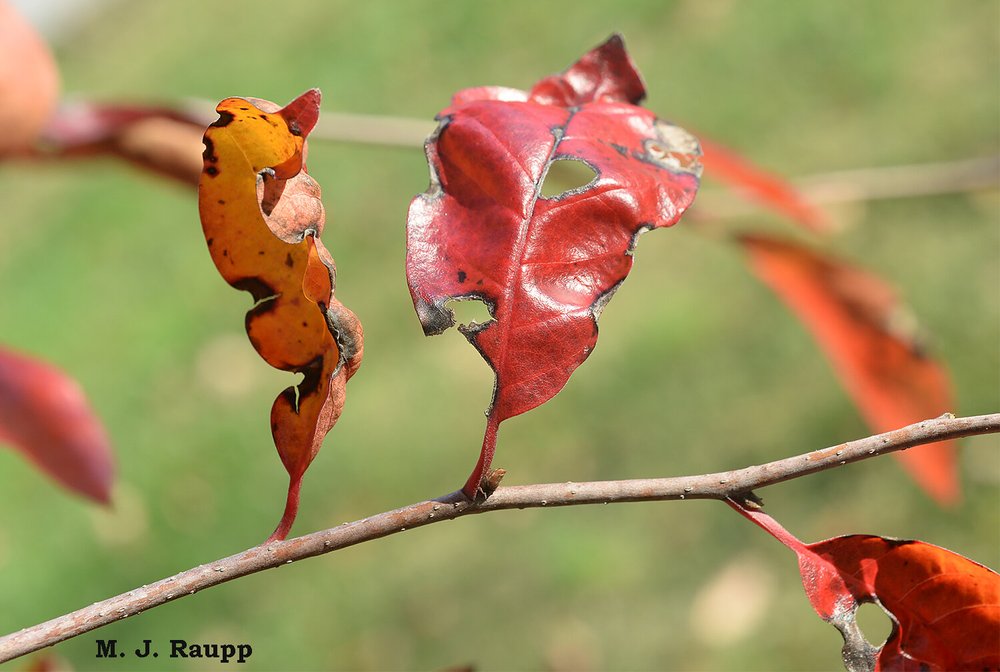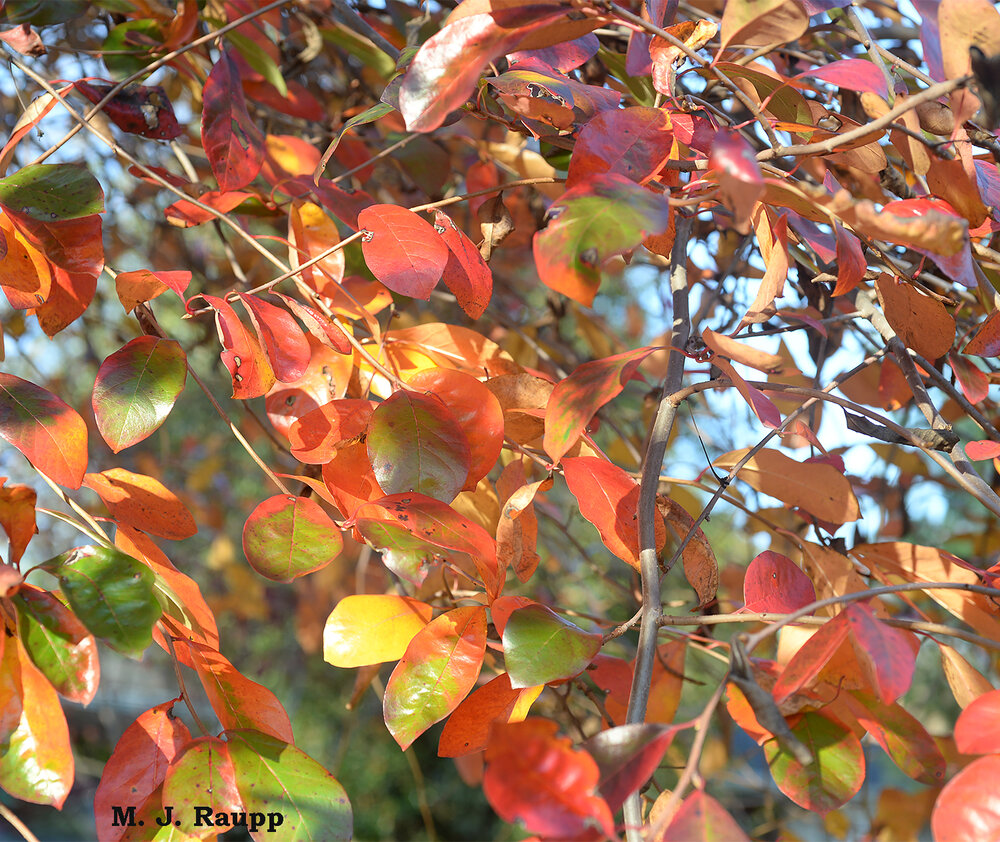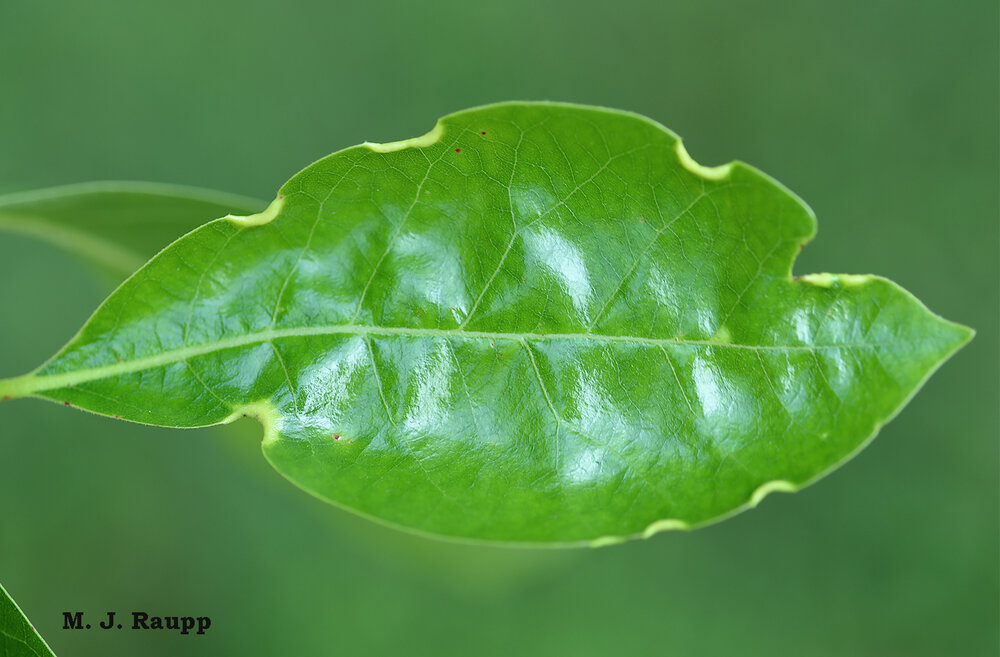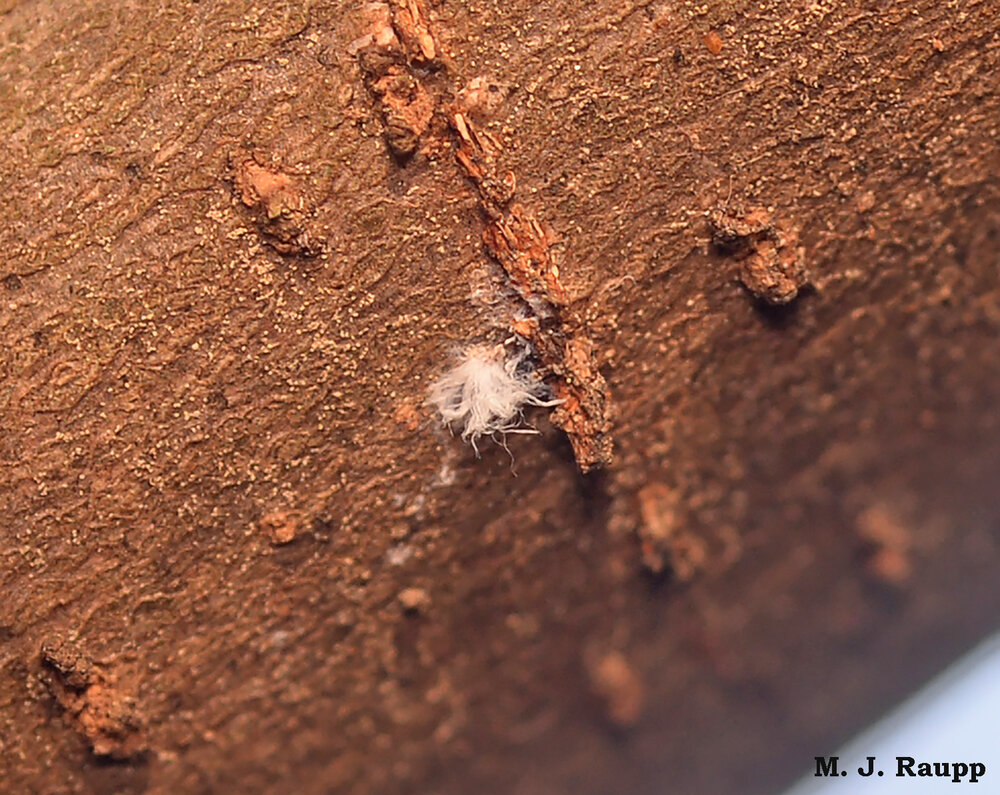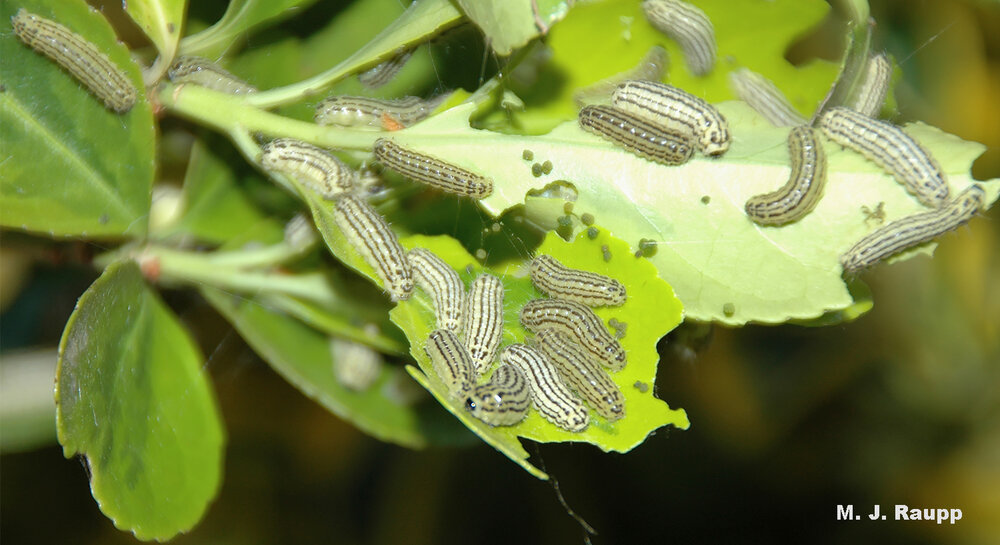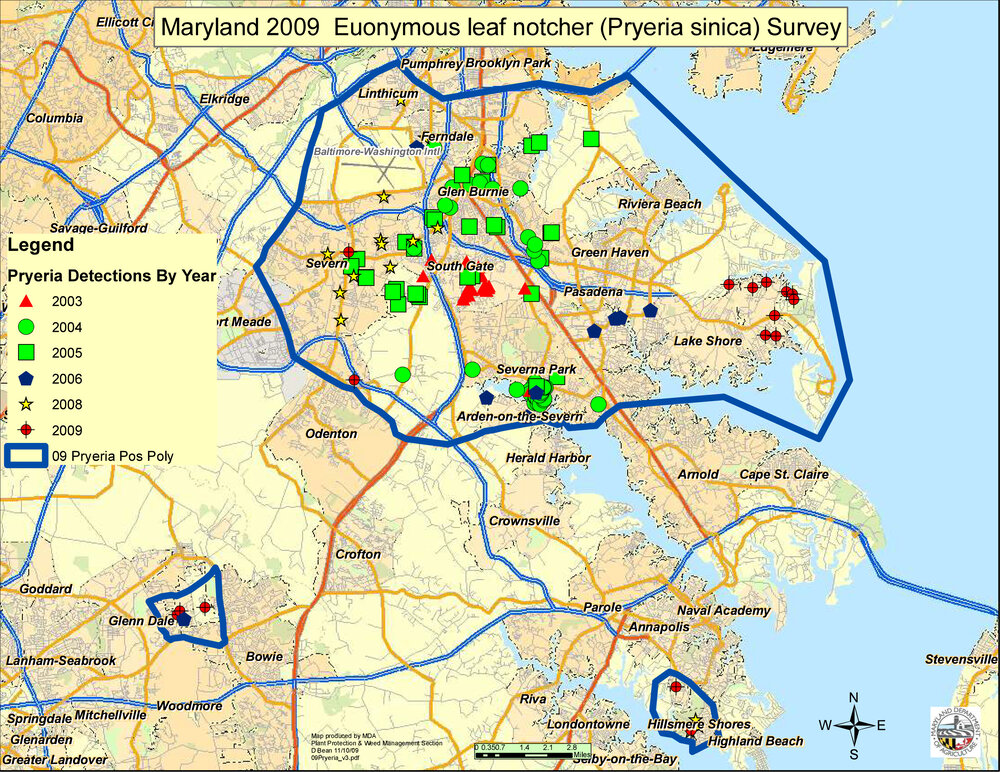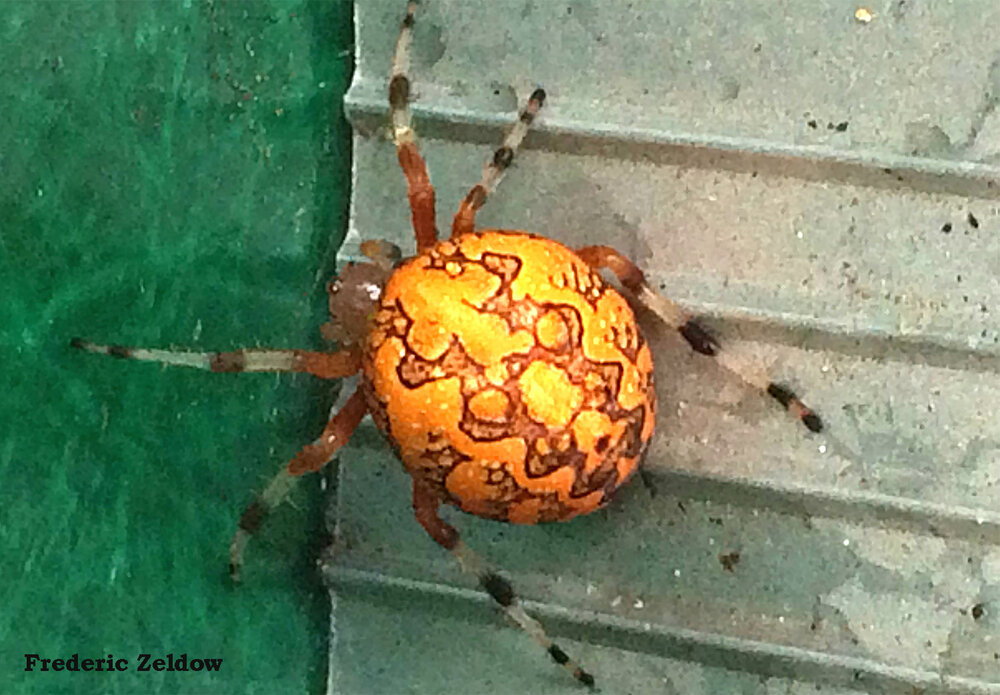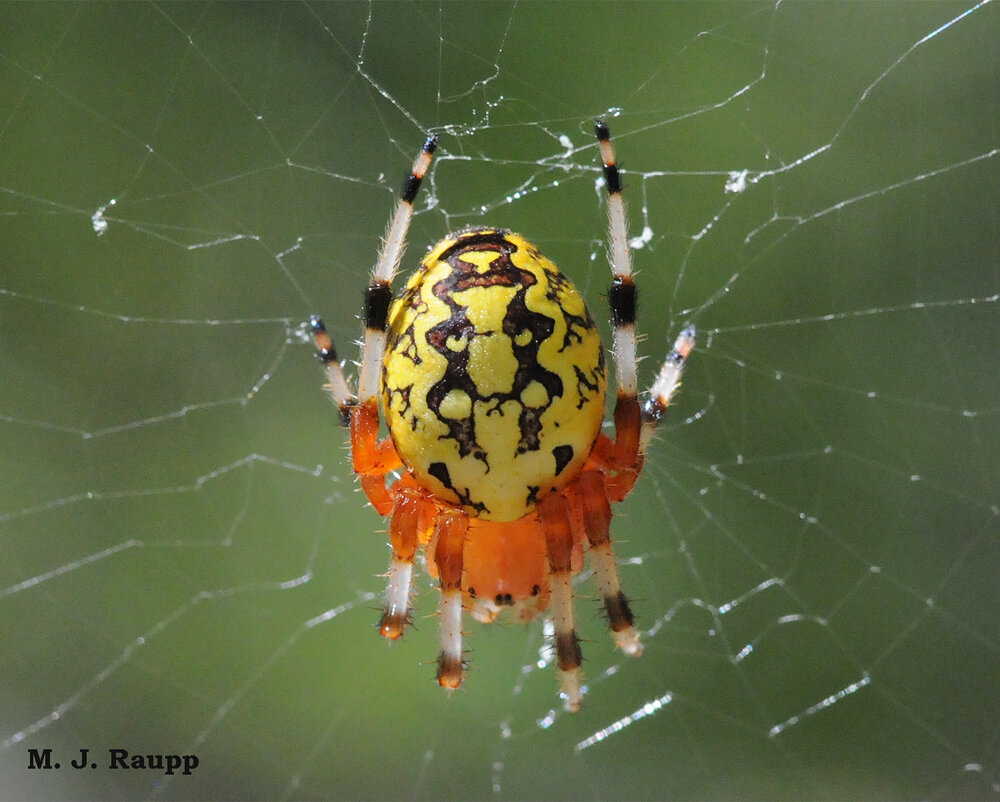Small, whitish moths in the pantry? Could be Indian meal moth, Plodia interpunctella
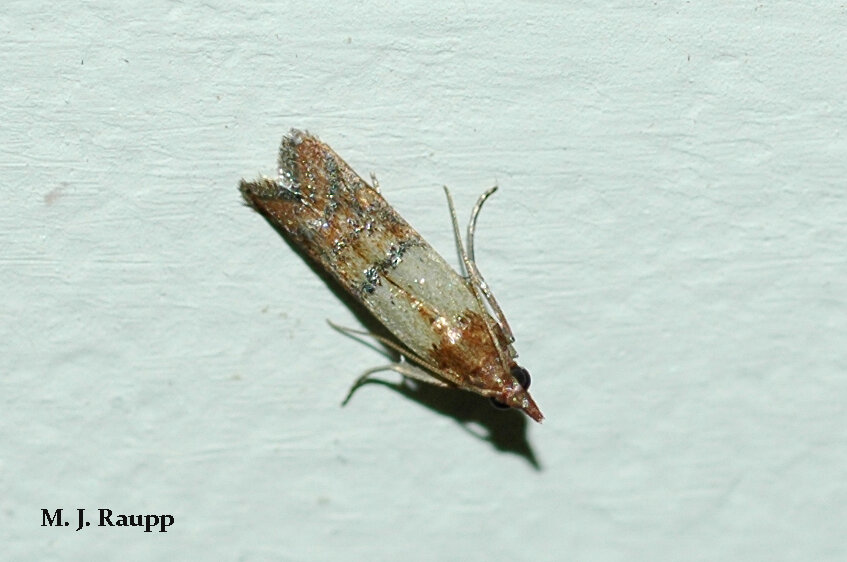
Sparkling scales of brown, black, and silver give the Indian meal moth a rather comely appearance.
Holiday season is baking season. Pies, cookies, cakes, and breads are comfort foods many crave on chilly days. During this season of culinary delight, cupboards and pantries receive lots of attention and activity. On a recent socially-distanced visit to a friend’s home, we noticed tiny moths flitting about the kitchen. A peek inside the pantry revealed more than a minor swarm of said moths. During this holiday season, many hopeful bakers will open pantries and be greeted by clouds of these small wonders, a cosmopolitan raider of the pantry, the Indian meal moth, Plodia interpunctella. While fascinating for entomologists, this is an unwelcome surprise for most folks.
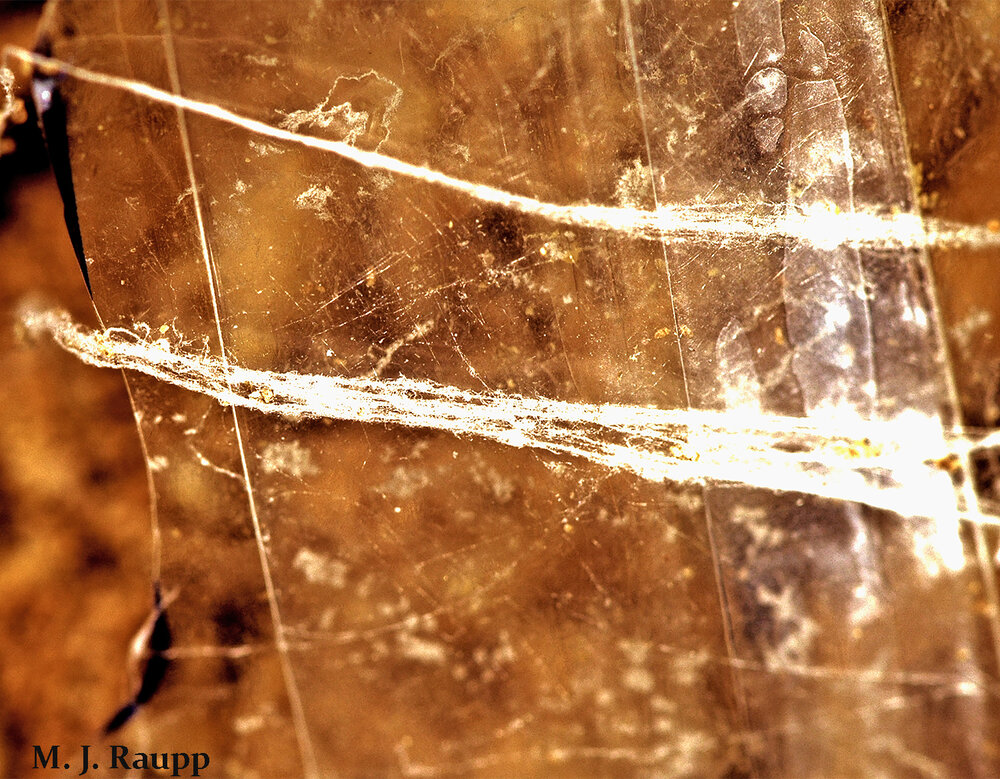
Silk inside plastic bags or containers is a pretty sure sign of a meal moth infestation.
The adult stage of this insect is a rather small moth just slightly larger than ½ inch in length, with wings banded white and rusty red. They flit about the pantry or cupboard in search of mates and tasty products rich in carbohydrates, fats, and proteins. One recent infestation in my cupboard raged in a package of organic cashews. Within the package, small cream colored caterpillars spun silken webs and sallied forth to consume the nutritious nuts. In addition to spinning silken galleries, larvae deposited frass, the digested remains of their meal. The voided frass was entangled in silken strands to form a nasty messy web. Two excellent clues signaling the presence of meal moths are the presence of silk and frass within a bag of flour, grain, seeds, or pet food. After larvae complete development, they may gnaw holes and escape their plastic prisons. Nomadic caterpillars are often found wandering about the walls and ceiling of the pantry in search of a protected spot to spin cocoons and develop into pupae. Sometimes vagabond larvae enter cracks between shelves, lids of jars, electrical sockets, or seams behind baseboards to pupate. Soon the next generation of adults will appear, intent on finding new bags and boxes of stored products to infest.
Within a plastic bag, scads of meal moth caterpillars spin silken webs and deposit frass while devouring my once tasty organically grown cashews. While caterpillars are a rich source of protein, this much extra protein with my nuts I don’t need.
How do meal moths colonize pantries in the first place? It is possible that original infestations of meal moths arrive with cereal, seeds, dried fruit, or grain as a few tiny eggs within a package from the store. After hatching from eggs, small caterpillars in a bag of seeds in the back of a closet could go unnoticed, but this vanguard is capable of generating sufficient moths to initiate a full blown mothagedon. Meal moths also survive outdoors and are commonly found in caches of nuts or seeds stored by squirrels or rodents. Adult moths originating outdoors can invade indoor pantries during warm weather when doors and windows are wide open. Mice often enter homes in autumn and winter seeking shelter and bringing stockpiles of seeds with them. These seeds might arrive contaminated with the associated moth eggs and may become a source of infestations indoors.
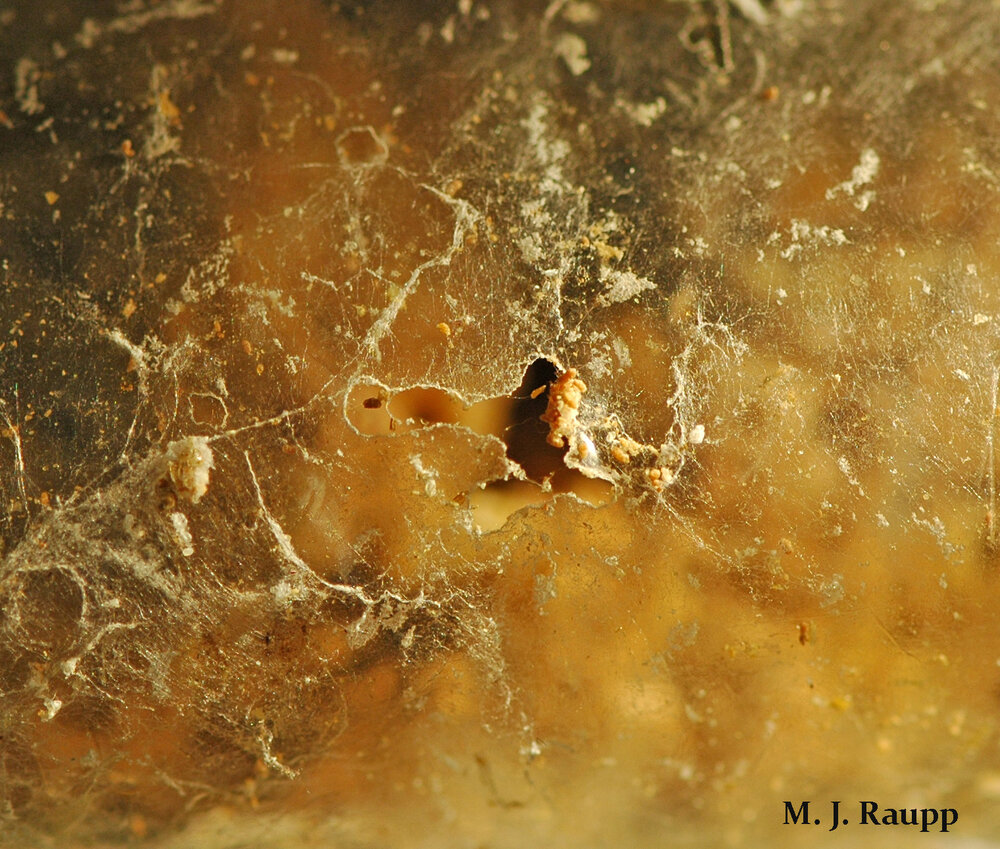
Indian meal moth caterpillars can chew through plastic and invade other bags of grain, seeds, and fruit.
What should you do if you find these rascals in a pantry or cupboard? First, remove all goods and products from the storage area. Vacuum the cupboard, pantry, or cabinet like there is no tomorrow. Carefully inspect all cracks, corners, crevices, and seams in the cupboard and remove any larvae or pupae you find. Seal as many of these refuges as possible with caulk. Remove and replace loose paper used to line shelves. Inspect any pots, pans, glasses or other items occupying the pantry where food will be stored and remove any meal moths on these items as well. Inspect opened and unopened bags and boxes of food for signs of silk, frass, larvae, or moths. If in doubt, toss it out. My pantry pest guru recommends the “deep chill” treatment for unopened packages you might want to salvage, but are suspect by association. Place unopened bags in the freezer for one week, remove them for one week, and then freeze again for a final week. The intermittent week of thaw tricks eggs into hatching and the tiny caterpillars are then killed by the second trip to subzero land. When you purchase items that might serve as food for meal moths, seal them in strong plastic storage containers with tightly fitting lids. This will help prevent any moths you might have missed during the crusade from laying eggs that hatch into larvae capable of infesting your food. Try not to store prime foods like grain or dried fruit for very long periods of time. The longer stored products remain on a shelf, the more likely they are to be infested by an itinerant moth that happens by.
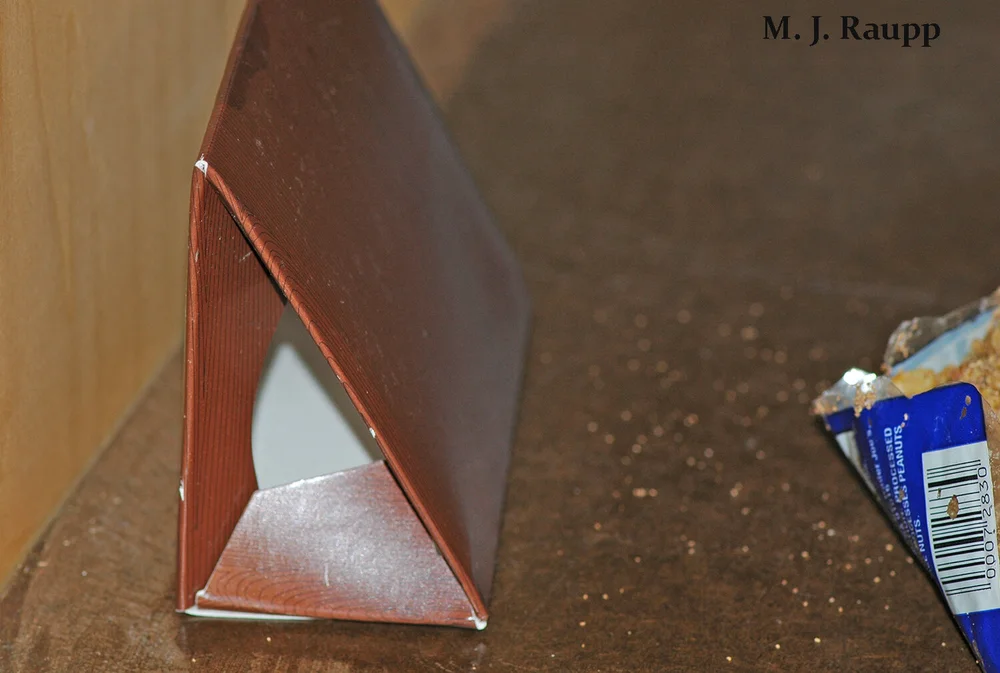
Pheromone traps can be used to capture male meal moths and gage their activity and numbers.
One approach useful in alerting you to an incipient invasion of meal moths is to purchase and deploy pheromone traps. These small triangular boxes are placed inside your pantry or cupboard. Inside the box is a sex pheromone bait that attracts the male meal moth from many feet away. The ever-hopeful male senses the pheromone, a chemical signal released by a female, and is tricked into believing that a receptive beauty waits inside the open-ended trap. He flies inside to find his mate, but instead becomes ensnared by a sticky substance lining the inside of the trap. By placing these traps within a pantry, you can detect the emergence of male moths that may be the harbingers of a burgeoning population of moths in your cupboard. This advanced warning serves as a signal to initiate a search and destroy mission. Good luck hunting moths and protecting your baking supplies during this season of culinary delight.
Acknowledgements
We thank Linda and Jeff for sharing their relentless Indian meal moths with Bug of the Week and Dr. Nancy Breisch for the wealth of information and advice about bugs. The Handbook of Pest Control, Ninth Edition, by Arnold Mallis was used as a resource.
This post appeared first on Bug of the Week

